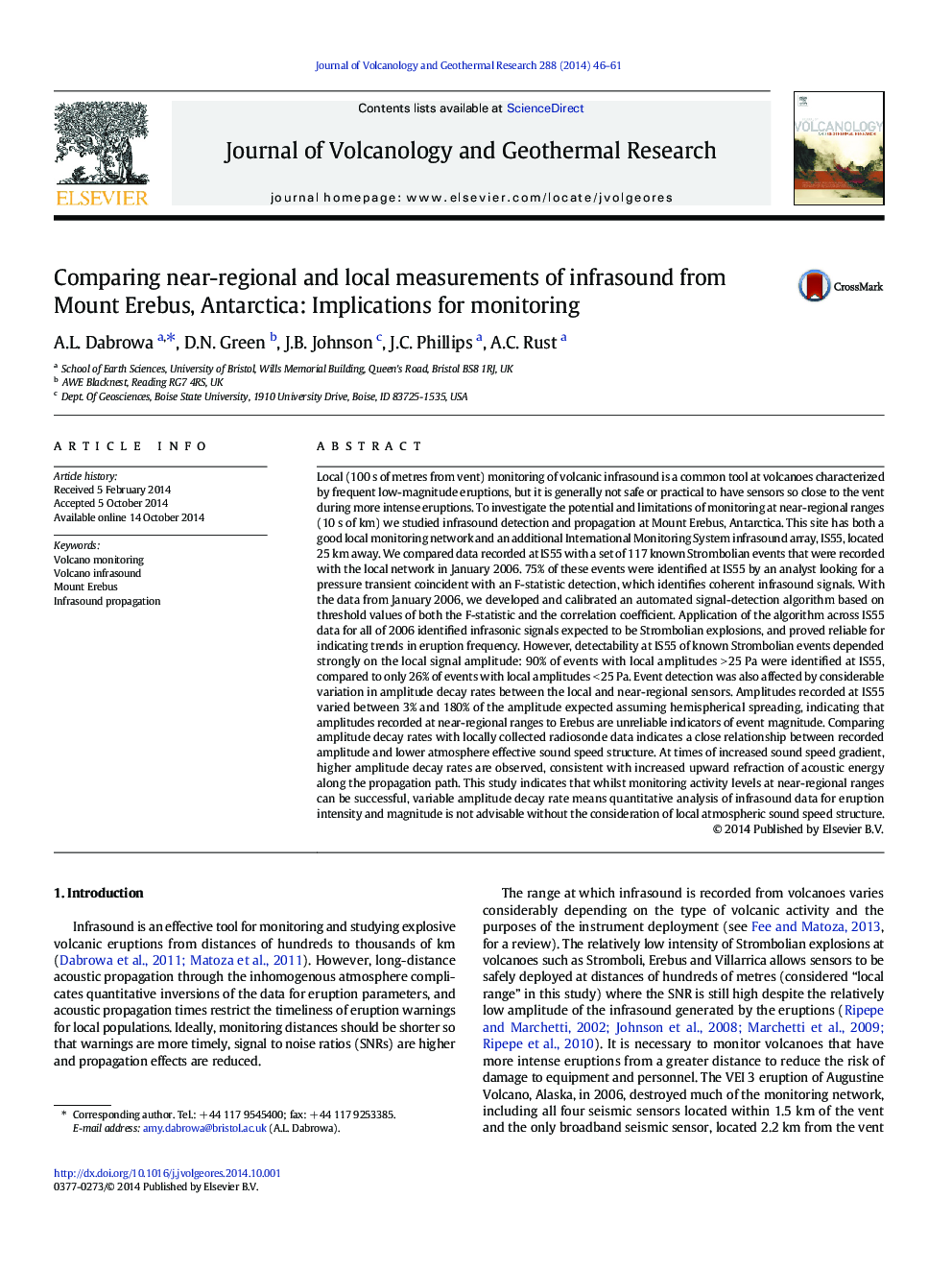| کد مقاله | کد نشریه | سال انتشار | مقاله انگلیسی | نسخه تمام متن |
|---|---|---|---|---|
| 4713033 | 1638334 | 2014 | 16 صفحه PDF | دانلود رایگان |

• A study of volcanic infrasound recorded 25 km from Mount Erebus, Antarctica.
• 75% of Strombolian events detected at the vent are observed at 25 km.
• Large amplitude, temporally smooth variation in infrasound amplitude decay with range
• Amplitude decay rate depends on lower tropospheric sound speed structure.
• Automatic event detection was able to monitor activity levels at Erebus from 25 km.
Local (100 s of metres from vent) monitoring of volcanic infrasound is a common tool at volcanoes characterized by frequent low-magnitude eruptions, but it is generally not safe or practical to have sensors so close to the vent during more intense eruptions. To investigate the potential and limitations of monitoring at near-regional ranges (10 s of km) we studied infrasound detection and propagation at Mount Erebus, Antarctica. This site has both a good local monitoring network and an additional International Monitoring System infrasound array, IS55, located 25 km away. We compared data recorded at IS55 with a set of 117 known Strombolian events that were recorded with the local network in January 2006. 75% of these events were identified at IS55 by an analyst looking for a pressure transient coincident with an F-statistic detection, which identifies coherent infrasound signals. With the data from January 2006, we developed and calibrated an automated signal-detection algorithm based on threshold values of both the F-statistic and the correlation coefficient. Application of the algorithm across IS55 data for all of 2006 identified infrasonic signals expected to be Strombolian explosions, and proved reliable for indicating trends in eruption frequency. However, detectability at IS55 of known Strombolian events depended strongly on the local signal amplitude: 90% of events with local amplitudes > 25 Pa were identified at IS55, compared to only 26% of events with local amplitudes < 25 Pa. Event detection was also affected by considerable variation in amplitude decay rates between the local and near-regional sensors. Amplitudes recorded at IS55 varied between 3% and 180% of the amplitude expected assuming hemispherical spreading, indicating that amplitudes recorded at near-regional ranges to Erebus are unreliable indicators of event magnitude. Comparing amplitude decay rates with locally collected radiosonde data indicates a close relationship between recorded amplitude and lower atmosphere effective sound speed structure. At times of increased sound speed gradient, higher amplitude decay rates are observed, consistent with increased upward refraction of acoustic energy along the propagation path. This study indicates that whilst monitoring activity levels at near-regional ranges can be successful, variable amplitude decay rate means quantitative analysis of infrasound data for eruption intensity and magnitude is not advisable without the consideration of local atmospheric sound speed structure.
Journal: Journal of Volcanology and Geothermal Research - Volume 288, 1 November 2014, Pages 46–61